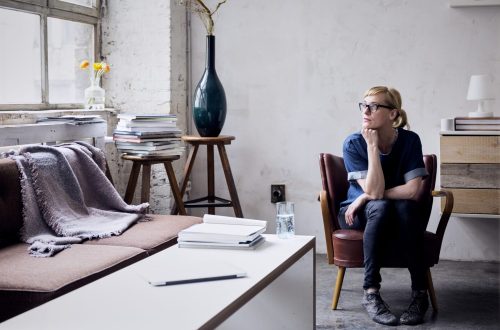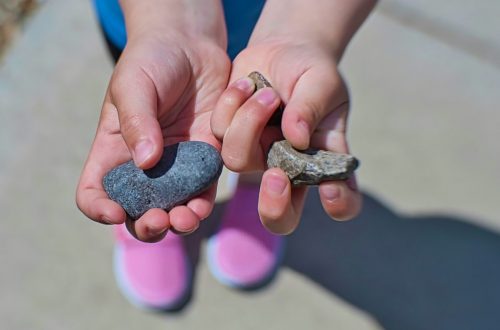It started as a lazy Sunday afternoon experiment. I was sitting on my couch, watching the light shift through the windowpanes and thinking, not for the first time, that my apartment had settled into a kind of invisible routine. Everything was in its usual place, every chair where I expected it, every rug lying flat and predictable. There was comfort in the familiarity, yes, but also a quiet stagnation, like a song you’ve played so many times it loses its punch. So I decided, with little more than curiosity as my guide, to move everything around without buying a single new thing.
I began with the coffee table. It had always been slightly askew, and somehow that small imperfection had grown into a larger sense of rigidity. Pushing it a few inches to the left, I noticed immediately how it changed the flow of the room. The sofa, which once felt like a heavy anchor, now opened into a wider path. The sunlight, previously interrupted, spilled across the rug in ways I hadn’t anticipated, painting the pattern in golden streaks I hadn’t noticed for months. It was a revelation so small it almost felt absurd, yet it altered the mood of the entire space.
Encouraged, I moved to the bookshelves. I had been meaning to do a little reorganization, and now seemed like the perfect excuse. Pulling books from their familiar homes, I allowed my instincts to guide me. Thick volumes leaned against thin ones, travel guides nestled beside novels whose plots I had long forgotten, the corners of coffee table books peeking out like mischievous grins. Each adjustment felt like a conversation with the room itself; it was as if the furniture and I were negotiating a new rhythm. By the time I stepped back, I realized the shelves weren’t just rearranged—they were alive, their arrangement subtly influencing the air, the light, even the way my gaze traveled across the room.
The dining table came next. I slid it closer to the window, imagining how morning light would hit the surface as I drank coffee or scribbled in my notebook. Chairs shifted like chess pieces, leaving open pockets of space I hadn’t considered. That evening, sitting down for a simple meal, I noticed that something in the room encouraged me to linger longer, to notice the clink of my spoon, the aroma of my food, the muted hum of the city outside. A small change in placement had somehow created room for reflection.
What surprised me most was the way my mood shifted alongside the furniture. There was a lightness in moving things with my own hands, a physical engagement that felt meditative. Each push or pull demanded attention, yet also offered a strange freedom, as if the room itself was forgiving my indecision. My apartment no longer felt like a static backdrop for my life; it felt like a responsive companion. The subtle power of rearranging furniture without buying anything new revealed itself not in a dramatic transformation, but in tiny shifts—shifts that opened pockets of possibility where I hadn’t noticed before.
I began to notice other effects, less tangible but just as real. My evenings felt longer, my movements more intentional. Sitting on the repositioned sofa, I watched the street below and felt more connected to the rhythm of the neighborhood. Reading in the newly angled armchair became an experience that felt curated by accident, each page turning in harmony with the sunlight spilling across the floor. The room, once familiar and predictable, had become an active participant in my life.
By the middle of the week, I found myself paying attention to details I had ignored for months. The angle of a lamp, previously overlooked, now offered a perfect pool of light for my evening sketching. A corner that had always felt neglected, shaded by a bookshelf, became a cozy nook for daydreaming. Even the rug, shifted slightly, felt like it had claimed a new identity. There was a playful satisfaction in discovering hidden potentials in objects I had lived with for years but never truly looked at.
The experiment also extended beyond the visual. I noticed how sound traveled differently with new configurations—footsteps echoing in unexpected ways, the low hum of the refrigerator sounding softer from a different angle. Even the air felt different, the flow between window and door altered subtly but perceptibly. These were changes I hadn’t anticipated, yet they reinforced a simple truth: space is not inert. It reacts, it communicates, it has a voice if you take the time to listen.
One night, I sat back on the sofa, a cup of tea warming my hands, and realized that I hadn’t needed to buy anything new to feel a transformation. It wasn’t the furniture itself that had changed my perspective, but the act of rearranging it—the intentionality, the physical effort, the awareness of how each piece relates to another. There was a satisfaction in crafting a world from what I already possessed, in discovering richness in the familiar. The small shifts in placement became a metaphor for life: sometimes, it isn’t about adding more, but about seeing what’s already there in a new way.
By the end of the week, the room felt subtly different, yet the changes were gentle, almost imperceptible to an outsider. But for me, the effect was profound. I moved through the apartment with a renewed sense of curiosity, as if it were a gallery I had rediscovered rather than a space I had long taken for granted. I realized how much our surroundings shape us, and how much we can shape them in turn. Rearranging furniture without buying anything new had given me a sense of agency, a reminder that transformation doesn’t always require acquisition—sometimes it’s just a matter of seeing what we already have with fresh eyes.
I carried that lesson into other parts of my life. I approached routines, relationships, and even my daily thoughts with the same principle: small shifts, thoughtful placement, attention to balance. Just as a chair moved a few inches can change the light in a room, small adjustments in how we navigate our days can alter the texture of experience. The power isn’t in the grand gestures or the new purchases; it’s in the subtle, deliberate rearrangements that reveal hidden potential.
In the end, the experiment became more than a week of moving furniture. It became a week of noticing, a practice of mindfulness and creativity, a lesson in presence and appreciation. Each push, pull, and nudge of a table or chair had taught me to see the extraordinary in the ordinary. And as I sit now in that slightly shifted space, sunlight warming the corner where the armchair now rests, I realize that transformation is always possible, even without anything new. Sometimes, all it takes is a little intention, a willingness to look differently, and the courage to move what’s already in your hands.




